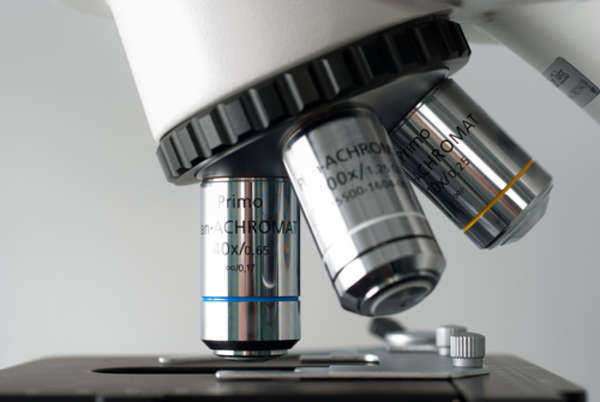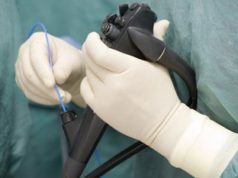
Introduction
Epithelioid cells are a type of cell that plays an important role in the body’s immune response. These cells are found in various organs and tissues, including the lungs, spleen, and lymph nodes. In this article, we will explore the features of epithelioid cells and their role in the immune system.
Features of Epithelioid Cells
Epithelioid cells are large, oval-shaped cells with abundant granular or vacuolated cytoplasm. They are characterized by their ability to form clusters or nodules in response to various stimuli, such as infection or inflammation. Epithelioid cells are often found in the lungs and other organs that are exposed to environmental toxins and pathogens.
Epithelioid cells are derived from macrophages, which are a type of white blood cell that plays a crucial role in the immune response. When macrophages encounter foreign substances, they engulf and digest them. In some cases, the macrophages may become epithelioid cells, which allows them to better contain and eliminate the foreign substance.
Role in the Immune System
Epithelioid cells play an important role in the immune system’s response to infection and inflammation. When the body is exposed to foreign substances, such as bacteria or viruses, the immune system triggers an inflammatory response to contain and eliminate the invading microorganisms. As part of this response, macrophages may transform into epithelioid cells and form clusters around the foreign substance.
The formation of epithelioid cell clusters is a sign of a chronic immune response. These clusters can be seen in diseases such as tuberculosis, sarcoidosis, and leprosy. In these diseases, the immune response becomes chronic, leading to the formation of granulomas and scarring in the affected tissues.
Epithelioid cells also play a role in wound healing and tissue repair. They are involved in the formation of scar tissue and can help to prevent further damage to the affected tissues.
Conclusion
Epithelioid cells are a type of cell that plays an important role in the immune system’s response to infection and inflammation. These large, oval-shaped cells form clusters around foreign substances, allowing the immune system to contain and eliminate them. Epithelioid cells also play a role in wound healing and tissue repair. The study of these cells and their functions is important for understanding the body’s immune response and developing new treatments for diseases that involve chronic inflammation.
What is the Epithelium?
The epithelium refers to one of the four types of animal tissue—the others are connective tissues, nervous tissues and muscle tissues. In addition to forming a number of glands, the epithelioid cells line the surfaces and cavities of structures throughout the entire body.
What are Epitheloid Cells?
Epithelioid cells are formations of cells that line the cavities in the human body. Epitheloid cells also cover flat surfaces on the body; of the four primary tissue types in the body, epithelioid cells are the most common.
The Epithelioid cells are bound together in sheets of human tissue known as the epithelia. These tissue sheets are tied together through a number of interactions, including adherens, gap junctions, tight junctions and desmosomes. The tight junction, which is deemed the tightest bond, is the only one found in the epithelium.
Functions of epitheloid cells include the following: selective absorption, protection, secretion, detection of sensations and trans-cellular transport.
How are Epitheloid Cells Classified?
Epitheloid tissues are classified by their composition; epithelioid cells are classified by the precise shapes of their cells. The four primary classes of simple epithelium cells are:
1.) simple squamous
2.) simple columnar
3.) simple cuboidal
4) pseudostratified.
The simple squamous epithelioid cells line areas where passive diffusion of gases take place. For example, these cells will be located in the linings of pericardial, the peritoneal cavities, the linings of the lungs and the walls of capillaries.
The simple cuboidal epithelioid cells typically possess absorptive, excretory and secretory functions. Examples of these cells include: salivary and pancreas glands, as well as the small collecting ducts of kidneys.
The simple columnar epithelioid cells are located in areas in possession of high secretive qualities (wall of the stomach) or absorptive qualities (small intestines). These types of epithelioid cells possess cellular extensions.
Lastly, the pseudostratified epithelia, also referred to as the called respiratory epithelium, are exclusively confined to the larger respiratory airways (the nasal cavity, bronchi and trachea etc.)
How are Epithelioid Cells Associated with Mesothelioma Cancer?
Epithelioid cells are connected to mesothelioma cancer, because transformations in the cells can, over time, form the deadly cancer. Epithelioid mesothelioma cancer is in fact the most common form of mesothelioma cancer—this particular disease accounts for approximately 70% of all mesothelioma cancer cases.
As stated above, the epithelioid cells are uniform in shape with unique tubular patterns and a cellular nucleus that, when evaluated under high magnification, is distinct from other nuclei. That being said, other types of cancers take similar form to epithelioid mesothelioma cancer.
Epithelioid mesothelioma cancer is a cancer that forms in the mesothelium, which is a protective layer of tissue that surrounds several vital organs. Epithelia cells, which are found throughout the human body, exist to separate several body environments. For instance, epithelial cells found in the skin separate the outside of the body from the inside.



























